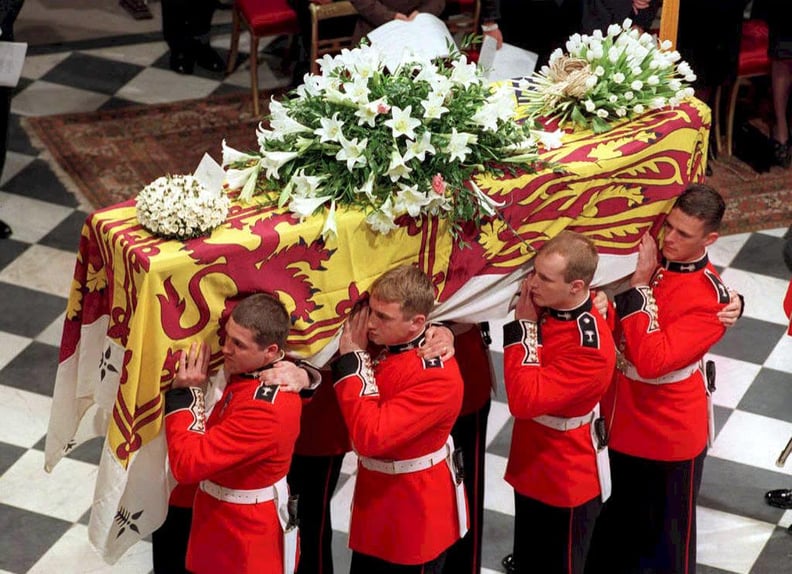The funeral of the Red Princess, Princess Sophia Duleep Singh, took place on February 5, 1941, at the Westminster Abbey in London. This event marked the end of an era for the former ruler of the Sikh Empire, who had lived a life of exile and struggle in the British capital.
As the princess lay in state, the Abbey was filled with dignitaries, friends, and family members who had come to pay their respects to the woman who had once been a symbol of resistance against British colonial rule. The funeral procession was led by the Dean of Westminster, who delivered a eulogy that highlighted the princess's remarkable life and her unwavering commitment to her people. The ceremony was a poignant reminder of the Red Princess's enduring legacy.
what was the significance of the Red Princess's funeral
what were the key events during the Red Princess's funeral

- Procession and Eulogy: The funeral procession was led by the <b>Dean of Westminster</b>, who delivered a eulogy highlighting the princess's remarkable life and her unwavering commitment to her people.
- Attendance: The funeral was attended by dignitaries, friends, and family members, including the <b>Queen Mother</b>, who was in her mid-90s at the time, despite not being on the best of terms with the <i>Red Princess</i>.
- Ceremony: The <b>ceremony</b> was a poignant reminder of the <i>Red Princess</i>'s enduring legacy, marking the end of an era for the former ruler of the <i>Sikh Empire</i>.
- Legacy: The funeral symbolized the end of an era for the former ruler of the <i>Sikh Empire</i>, honoring her life and her unwavering commitment to her people.
what was the role of Princess Diana's brother in her funeral
 |
The coffin of the princess inside Basilica di Santa Maria della Steccata. Photo (c) RoyalBlog NL / Hans Jacobs. |
Let nothing frighten you, all things pass away.
God never changes, patience obtains all things.
He who has God finds he lacks nothing; God alone suffices.
 |
| The Duke and Duchess of Parma and other members of the Ducal Family. Photo (c) RoyalBlog NL / Hans Jacobs. |
 |
| A view of the funeral mass. Photo (c) RoyalBlog NL / Hans Jacobs. |
Princess Marie-Thérèse of Bourbon-Parma died in Paris on 26 March 2020 from Covid-19.
You can read Eurohistory's obituary of the princess here: In Memory of a Red Princess: The Passing of Marie-Thérèse of Bourbon-Parma (1933-2020)
For more information about the funeral of the princess, you can read RoyalBlog NL's article here:what were the main themes of the Red Princess's funeral
The funeral of the Red Princess, Princess Sophia Duleep Singh, marked the end of an era for the former ruler of the Sikh Empire. As we reflect on this significant event, we are reminded of the Red Princess's unwavering commitment to her people and her legacy. Her life was a testament to the power of resilience and courage in the face of adversity. The funeral procession, led by the Dean of Westminster, was a poignant reminder of the Red Princess's enduring impact on the world.
As we conclude our exploration of the Red Princess's funeral, we are left with a profound sense of respect and admiration for her remarkable life. Her story serves as a beacon of hope and inspiration, reminding us that even in the darkest of times, there is always the potential for greatness. The Red Princess's legacy continues to inspire generations, and her funeral remains a powerful symbol of the enduring power of the human spirit. As we bid farewell to this remarkable woman, we are reminded of the importance of honoring our heroes and preserving their legacies for future generations. The Red Princess will always be remembered as a symbol of courage, resilience, and determination, and her funeral will continue to be a powerful reminder of her enduring impact on the world.
what were the key elements of the Red Princess's funeral procession
- Procession and Eulogy: The funeral procession was led by the Dean of Westminster, who delivered a eulogy highlighting the princess's remarkable life and her unwavering commitment to her people.
- Attendance: The funeral was attended by dignitaries, friends, and family members, including the Queen Mother, who was in her mid-90s at the time, despite not being on the best of terms with the Red Princess.
- Ceremony: The ceremony was a poignant reminder of the Red Princess's enduring legacy, marking the end of an era for the former ruler of the Sikh Empire.
- Legacy: The funeral symbolized the end of an era for the former ruler of the Sikh Empire, honoring her life and her unwavering commitment to her people.


No comments:
Post a Comment